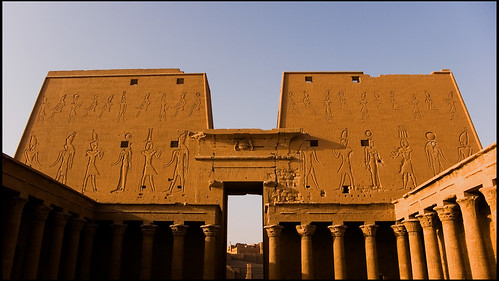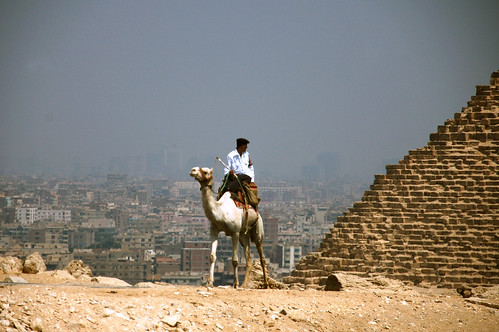With the UN’s Climate Change summit taking place in Copenhagen next month, it seems everyone’s minds are adjusted to the environment. Zahi Hawass is no different. The sands of time and weather pose a serious threat to many of his famous Egyptian landmarks, and the antiquities chief has set up several projects to combat the forces of nature on some of man’s greatest achievements.
Though the rising tides of the Nile have been threatening Egypt’s monuments for millennia, the 20th and 21st centuries have no doubt posed their biggest problems. Man has hardly played a positive role in this: take the construction of the Aswan High Dam and its flooding of Nubia, the subsequent relocation of Abu Simbel temple and undoubted loss of a massive number of ancient artefact, as the showcase point in hand. Rising ground water levels in general are of particular concern to Dr Hawass. “The objects and buildings that are currently underwater are being eroded by the salty water and the monuments are being destroyed,” he writes on his blog.
But when you’re talking about a country largly covered in sweeping desert, wind and exposure will inevitably play their considerable parts. Equally air pollution is a rising issue, especially in a country swept up in fierce industrialisation. The pyramids, sitting on the verge of caustic Cairo, are first in the pollution firing line. Yet all city-dwelling monuments, such as Karnak Temple at Luxor, will be facing trouble as the surrounding air deteriorates.
The SCA is all too aware of the threats posed by the environment. Projects are springing up all over the country, at some of its best-known sites. “We currently have projects on the West Bank of Luxor, at the temples of Kom Ombo, Esna and Edfu, and at different sites in Memphis, Alexandria and Abu Mina,” writes Dr Hawass. “If nothing were done, these monuments could be completely destroyed in a few decades, and all their history and significance could be lost.” Work is also ongoing drilling for water under the Sphinx (watch the video with Mark Lehner).
“These SCA projects are doing very important work to save the monuments for the future, to preserve the heritage of Egypt for the world,” Dr Hawass adds. A huge amount of work has already been done to save the tombs of the Valley of the Kings from environmental disaster. Horemheb’s tomb has been given state-of-the-art air conditioning technology. King Tut’sfinal resting place could be getting a replica to curtail damage by its throngs of admirers, and the Getty Conservation Institute has been drafted in to stop its paintings growing any more unsightly brown spots.
Is Egypt – and the world – doing enough to save its cultural heritage from the effects of the environment? Whose responsibility are ancient landmarks: are we all in it together? Have your say at Heritage Key – either , our discussion page, or by emailing me direct. Heritage Key – Unlock the Wonders.

